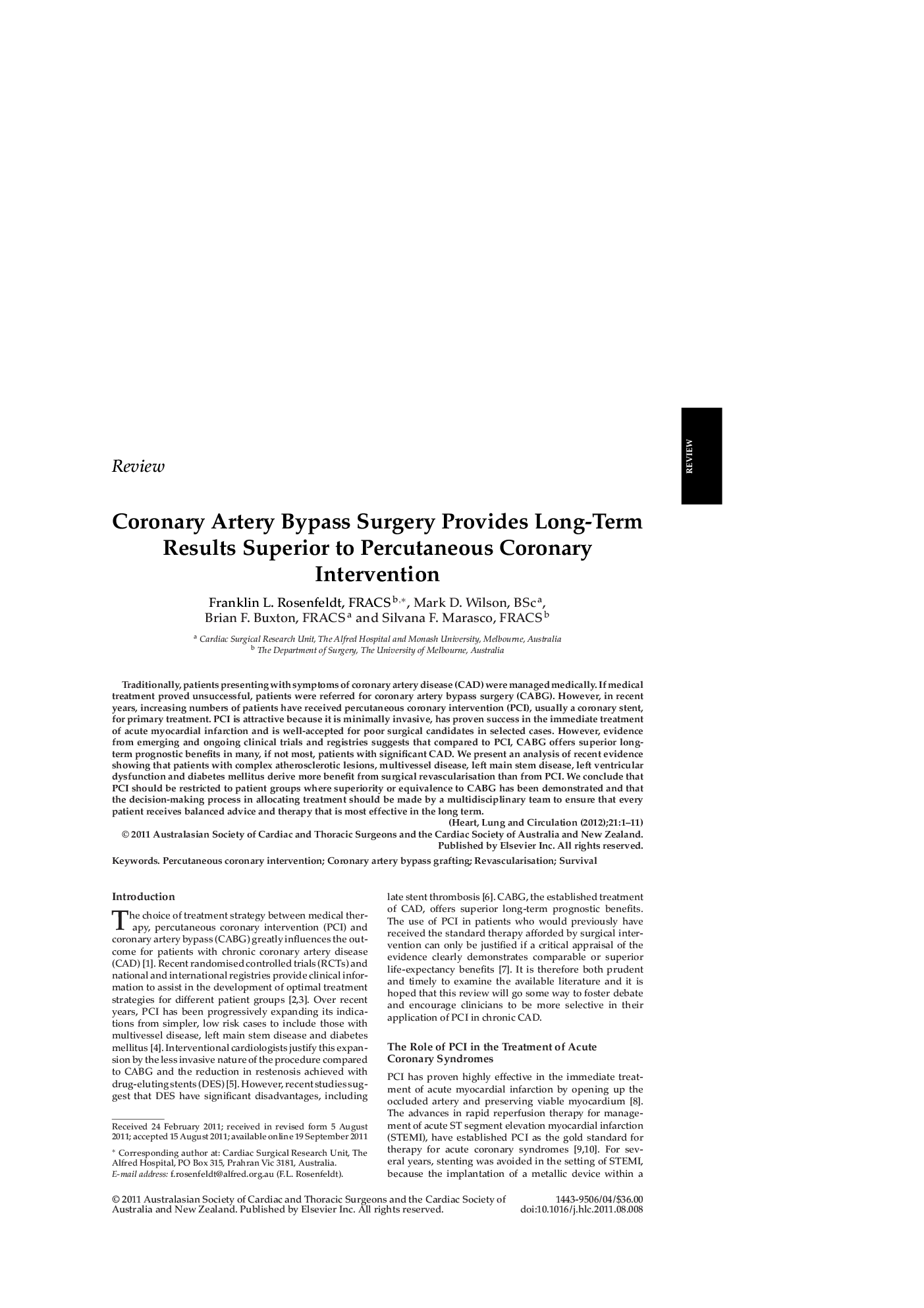| Article ID | Journal | Published Year | Pages | File Type |
|---|---|---|---|---|
| 2918128 | Heart, Lung and Circulation | 2012 | 11 Pages |
Traditionally, patients presenting with symptoms of coronary artery disease (CAD) were managed medically. If medical treatment proved unsuccessful, patients were referred for coronary artery bypass surgery (CABG). However, in recent years, increasing numbers of patients have received percutaneous coronary intervention (PCI), usually a coronary stent, for primary treatment. PCI is attractive because it is minimally invasive, has proven success in the immediate treatment of acute myocardial infarction and is well-accepted for poor surgical candidates in selected cases. However, evidence from emerging and ongoing clinical trials and registries suggests that compared to PCI, CABG offers superior long-term prognostic benefits in many, if not most, patients with significant CAD. We present an analysis of recent evidence showing that patients with complex atherosclerotic lesions, multivessel disease, left main stem disease, left ventricular dysfunction and diabetes mellitus derive more benefit from surgical revascularisation than from PCI. We conclude that PCI should be restricted to patient groups where superiority or equivalence to CABG has been demonstrated and that the decision-making process in allocating treatment should be made by a multidisciplinary team to ensure that every patient receives balanced advice and therapy that is most effective in the long term.
